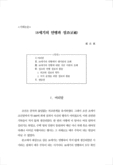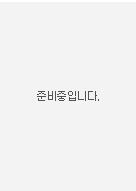

-
 * 본 문서는 배포용으로 복사 및 편집이 불가합니다.
* 본 문서는 배포용으로 복사 및 편집이 불가합니다.
미리보기
서지정보
· 발행기관 : 동국사학회
· 수록지 정보 : 동국사학 / 53권
· 저자명 : 鄭在薰
목차
Ⅰ.머리말
Ⅱ. 18세기의 연행에서 옛사람의 오해
Ⅲ. 18세기의 연행에 대한 지금 사람의 오해
Ⅳ. 정조와 연행 정보의 활용
1. 외교와 정보의 획득
2. 국가 운영을 위한 정보의 활용
Ⅴ. 맺음말초록
본 논문은 조선시대에 한-중 관계에서 빼놓은 수 없는 현상 가운데 하나인 연행(燕行)에 따른 이해와 오해를 다룬 논문이다. 종래 연행에 대한 연구를 검토해보면 연행에 대해서는 적지 않은 오해가 있었던 것도 사실이다. 그 가운데는 이전의 연행록에 기록된 정보를 단순하게 따르면서 오해한 부분도 있으며, 나아가서는 이전 사람들의 세계관을 반복함으로써 달라진 청의 현실을 제대로 파악하지 못한 오해도 있었다.
연행록을 연구하였던 연구자들도 연행록이 가지는 자료의 한계를 분명하게 직시하지 못하고 변화된 부분만을 확대해석한 경우도 없지 않았다. 나아가 연행의 당사자였던 청조의 정책 변화, 현실에서 유화된 부분 등에 대한 파악을 충분하게 하지 못한 채 조선의 입장에서 연행을 통해 파악하여 깨달은 ‘진실’에 지나치게 흥분하기도 하였다.
이러한 점들을 고려해 본다면 연행에 대한 연구는 앞으로 좀 더 확대되고, 전체적인 관점에서 진행될 필요가 있다. 이 점과 관련하여 연행의 당사자 가운데 하나였던 조선의 국왕이 연행을 어떻게 대하였는가의 문제는 이제까지의 연구에서 소홀하였던 부분이었다. 연행에서 가장 변화가 극심하였던 18세기, 특히 후반의 경우 정조는 연행에 매우 민감하게 관심을 표하고 이를 통해 얻은 정보를 국정에 직접 활용하기도 하였다.
연행에서 획득한 정보가 ‘개인의 깨달음’에서 그친 것이 아니라 국가적인 정보의 획득과정을 거쳐 국정에서 활용되는 정보로서 기능한 것이었다. 정조는 그의 정치운영 과정에서 매우 중요한 사건이었던 화성(華城)의 건설에서, 또 창덕궁의 품계석(品階石)의 설치에서, 또 군사(君師)의 모범을삼으려는 관심에서 청으로의 연행에 당대 최고의 화원인 김홍도(金弘道)와 이명기(李命祺)를 파견하였다. 18세기의 연행은 조선의 갱신 기회를 만들려던 정조에게도 매우 소중한 창구였던 것이라 할 수 있다.영어초록
Examined in this article, is a very special phenomenon that we now call as
“Yeon’haeng(燕行),” which referred to all the travels and journeys made by the
Joseon people to “Yeon’gyeong(燕京),” the capital city of the Manchurian Qing
dynasty. Traveling to this foreign capital was a rather hot trend of the time
for the Korean people, and such journeys constituted a vital part of the
Korean-Chinese relationship of the time. So, analyzed here is the current level of
understanding (or misunderstanding for that matter) of this particular aspect of
the Joseon society. There have been a lot of misconceptions of this phenomenon,
and among such misconceptions there have been some misunderstanding of the
nature of those journeys as well, which were caused by the people’s literal
interpretation of the texts(travel journals), or the people’s inability to perceive the
nature of the Qing dynasty and the past peoples’ perception of the world, in more
adequate terms.
Many scholars have been studying all the travel journals which documented
the journeys to the Yeon’gyeong capital. Those travel journals were (and are now)
usually called as “Yeon’haeng-rok(燕行錄).” But scholars did not clarify the
“weak spots” of these travel journals as a source of information, and failed to
determine whether or not they were suitable material for historical examination.
They only tended to make comments upon some of the aspects that continued
to change all the time, and they also had a tendency to try bringing too much
meaning out of it. Also, the changes that were made to the policy of King Jeongjo
were never sufficiently examined, even with the fact that King Jeongjo himself
had opportunities to travel to Yeon’gyeong as well. People were only ‘thrilled’
by some factual details that suggested themselves in various records.
Considering all this, we can say for sure that studies of these “Yeon’haeng”
travels should expand in the future. They should tackle with more diverse themes,
from a more comprehensive viewpoint. One of the themes which previous studies
did not care to examine enough, was how the Joseon Kings perceived the people’s
such travels to the capital of the Qing dynasty. 18th century was a time which
witnessed the most noticeable changes in the people’s Yeon’gyeong trips, and in
the latter half of that century King Jeongjo too displayed a very sensitive attitude
toward his subjects’ such journeys. He happened to feel a great interest in this
phenomenon, and sometimes he made good use of all the information secured from
such coming and going of the people, in his governing of the Joseon society.
We can see that all the knowledge gained from people’s travels to the Chinese
capital did not merely add some trivial things to the individuals’ understanding
of the situation, but also contributed to the overall governing of the country as
such information was all channeled into dynastic sources. King Jeongjo once had
Kim Hong-do(金弘道) and Yi Myeong-gi(李命祺), who were the most acclaimed
artists of the time, accompany the envoy he dispatched to Qing, in an effort to
secure information as well as inspiration for several of his critical policies, which
included the construction of the Hwa’seong(華城) city, the establishment of the
rank-indicating stone plates(“Pum’gye-seok, 品階石”) at the Changdeok-gung
palace, and the reinforcement of his own image as a “Master King”(“Gun’sa, 君
師”). In other words, the Yeon’haeng journeys in the 18th century turned out
to be a very special asset for King Jeongjo, as he wanted to renovate the Joseon
society.참고자료
· 없음태그
-
자료후기
-
자주묻는질문의 답변을 확인해 주세요

꼭 알아주세요
-
본 학술논문은 (주)학지사와 각 학회간에 저작권계약이 체결된 것으로 AgentSoft가 제공 하고 있습니다.
본 저작물을 불법적으로 이용시는 법적인 제재가 가해질 수 있습니다. -
해피캠퍼스는 구매자와 판매자 모두가 만족하는 서비스가 되도록 노력하고 있으며, 아래의 4가지 자료환불 조건을 꼭 확인해주시기 바랍니다.
파일오류 중복자료 저작권 없음 설명과 실제 내용 불일치 파일의 다운로드가 제대로 되지 않거나 파일형식에 맞는 프로그램으로 정상 작동하지 않는 경우 다른 자료와 70% 이상 내용이 일치하는 경우 (중복임을 확인할 수 있는 근거 필요함) 인터넷의 다른 사이트, 연구기관, 학교, 서적 등의 자료를 도용한 경우 자료의 설명과 실제 자료의 내용이 일치하지 않는 경우
“동국사학”의 다른 논문도 확인해 보세요!
-
잭슨시대 “인디언 증오”의 메타피직 32 페이지
본 논문은 미국 잭슨시대 인디언 제거와 추방의 논리가 얼마나 사실의 측면에서 볼 때 왜곡되고 위선적이었는가를 확인해보는 목적을 가지고 있다. 그들 백인들은 인종적인 측면에서 미국의 토착 인디언들은 열등할 뿐만 아니라, 문명과 진보의 빛을 수용하려는 어떠한 노력을 보여주지 않고 있으므로 해서 단연코 백인문명지역에서 먼 곳으로 이주하거나, 그들이 그러한 이주 .. -
李鴻章의 對外政策 硏究 36 페이지
본 논문은 이홍장의 대 조선 정책의 핵심인 조선 속국명분론이 각 시기마다 확연히 상이한 정책으로 전개되고 있는 점에 주목하여 3시기로 나누어 그 전개양상과 의미를 살펴보았다. 1시기는 강화도조약 전 시기로 전통적인 속국명분론을 주장하였고, 2시기는 강화도조약 후부터 임오군란까지로 연미정책을 산두로 해서 속국을 명문화하려고 힘쓴 시기이며, 3시기는 임오군란부.. -
李正己 一家 藩鎭의 領域 變遷 43 페이지
안사의 난 말기인 上元2년(761) 12월 平盧節度使侯希逸이 靑州지역으로 들어오자, 肅宗은 그를 平盧淄靑節度使에 임명하고 靑?密?登?萊?海?齊?淄?沂?滄?德??11주를 관할하게 하였다. 다만, 이는 아직 명목적 성격이 강하였다. 이어 보응 원년(762) 5월 侯希逸이 청주를 함락시키자 代宗은 그를 淄?靑?齊?沂?密?海6州를 관할하게 하였다. 같은 해에 ‘山.. -
내몽골 암각화의 인면 형상과 한국 양전동식 암각화의 중심 도상 비교 연구 39 페이지
이 글은 우리나라 경상북도 일원에서 발견된 소위 ‘양전동식’ 암각화의 중심 도상을 가면으로 보고, 그 원류를 내몽골의 인면 형상에서 찾고자 한일부 연구자의 연구 결과에 불합리한 점이 있음을 지적하고, 우리나라 양전동식 암각화의 중심도상은 한국적 풍토에 기반을 둔 지역 문화의 소산임을 밝힌 것이다. 이 글에서는, 그동안 내몽골에서 발견된 바위그림 유적지를 정.. -
19세기 후반 申箕善의 현실 인식과 사상적 변화 37 페이지
동도서기론은 개방론과 척사론이 첨예하게 대립되던 1880년대 초반에 등장한 사상적 조류였다. 동도서기론을 처음으로 주장한 인물은 申箕善이다. 본고에서는 1890년대 이후 신기선의 행적을 보충하여 신기선의 생애 전반을 재검토하면서 그의 사고가 시기별로 어떻게 변화되었는가를 살펴보았다. 신기선은 산림 문하에서 수업을 받다가 1880년대 초반 동도서기론자로 전신..
찾으시던 자료가 아닌가요?
지금 보는 자료와 연관되어 있어요!
문서 초안을 생성해주는 EasyAI



